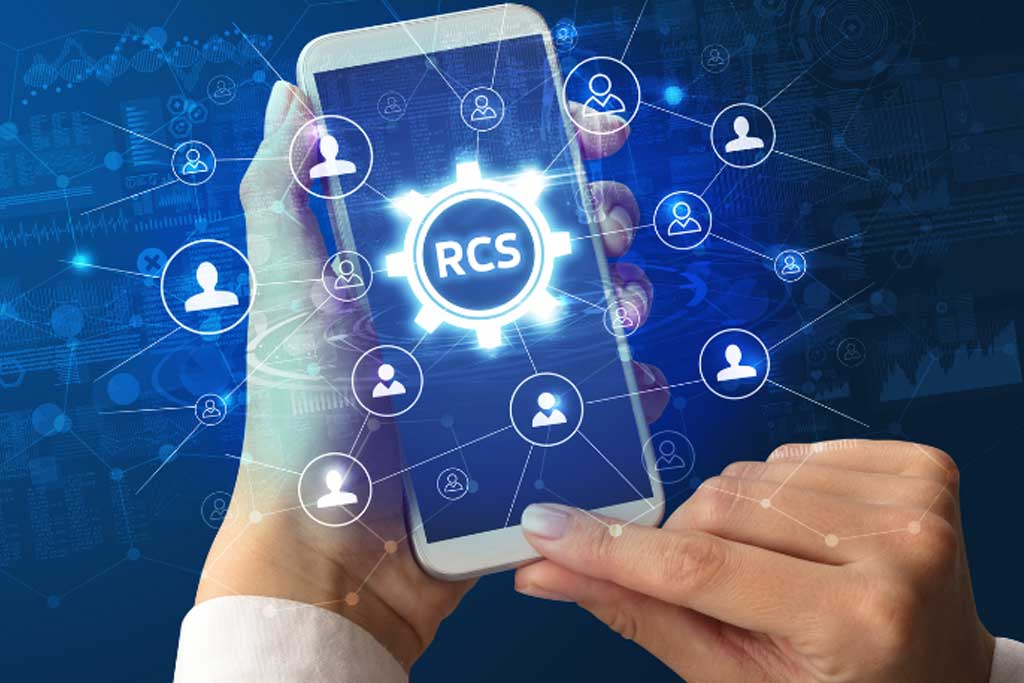In the ever-evolving world of mobile communication, the battle between RCS (Rich Communication Services) and iMessage for supremacy in the messaging realm has been intensifying. Android phones, with their expansive user base, have championed RCS, while iMessage has become synonymous with the seamless communication experience on Apple devices. As we delve into the intricacies of these messaging platforms, exploring their features, advantages, and user experiences, it becomes apparent that the debate between Android’s RCS and Apple’s iMessage is not just about green bubbles versus blue bubbles; it is about the future of messaging.
Understanding the Basics: RCS and iMessage
Before delving into the nuanced comparisons, let’s establish a foundational understanding of what RCS and iMessage entail.
RCS, or Rich Communication Services, is a messaging protocol designed to replace traditional SMS (Short Message Service) messages. It brings a plethora of advanced features to text messaging, such as high-resolution photos, read receipts, and better group chats. RCS is often hailed as the upgraded version of SMS, and its adoption is widespread among Android users.
On the other hand, iMessage is Apple’s proprietary messaging platform exclusive to iOS devices. It offers a seamless and feature-rich communication experience for iPhone users, with capabilities such as end-to-end encryption, high-quality media transfer, and iMessage-style features like read receipts and typing indicators.
Key Differences: Green Bubbles vs. Blue Bubbles
One of the most noticeable distinctions between RCS and iMessage lies in the color of the bubbles that encapsulate the messages. Android users, sending messages through RCS, have green bubbles, while iPhone users enjoy the distinguished blue bubbles of iMessage.
The color of these bubbles has inadvertently become a symbol of the ongoing debate. iPhone users, in particular, have been known to jestingly refer to messages from Android users as “green bubbles.” This seemingly innocent distinction, however, underscores a deeper divide between the two platforms and their users.
End-to-End Encryption: A Secure Messaging Experience
A critical aspect of any messaging platform is the security it provides for user communications. iMessage has long been lauded for its end-to-end encryption, ensuring that only the intended recipient can decipher the content of the messages. This level of security has been a cornerstone of Apple’s commitment to user privacy.
RCS, on the other hand, has faced criticism for not mandating end-to-end encryption across all messages. While some RCS messages may benefit from this level of security, it is not universally applied. This disparity in encryption standards raises concerns among users who prioritize the confidentiality of their conversations.
Read Receipts and Enhanced Communication
Read receipts, a feature that allows users to see when their messages have been read by the recipient, have become a staple in modern messaging platforms. iMessage has seamlessly integrated this feature into its interface, providing users with a real-time acknowledgment of their message delivery.
RCS also supports read receipts, bridging the gap between Android and iPhone users in terms of communication transparency. The inclusion of read receipts in RCS messages enhances the overall user experience, making it more comparable to iMessage.
Interoperability and the Green Bubble Stigma
One of the key advantages touted by RCS supporters is its better interoperability experience. Unlike iMessage, which operates exclusively within the Apple ecosystem, RCS is designed to be platform-agnostic. This means that Android users can communicate seamlessly with users on different mobile devices, including iPhones.
The infamous “green bubble” stigma associated with Android messages has often been a point of contention. Apple users have sometimes viewed green bubbles as a sign of an inferior or non-iMessage experience. However, the promise of RCS lies in its potential to bridge this gap, enabling users on different platforms to communicate without the stigma associated with the color of their message bubbles.
RCS Universal Profile: Unifying the Messaging Experience
To address the fragmentation in messaging standards, the GSMA (GSM Association) introduced the RCS Universal Profile. This standardized approach ensures that RCS is implemented consistently across devices and carriers, fostering a more cohesive messaging experience. The RCS Universal Profile aims to create a global standard for rich communication services, enabling users to enjoy advanced features seamlessly.
Apple’s iMessage, while an integral part of the iOS ecosystem, operates in a more closed environment. The lack of universal compatibility can be a hindrance when communicating with users on different platforms. The RCS Universal Profile, in this regard, presents a compelling case for Android users seeking a more inclusive messaging experience.
Advancements in Multimedia Content Sharing
The way we communicate has evolved beyond simple text messages, and the ability to share multimedia content has become paramount. RCS, with its support for high-resolution photos, multimedia messages, and advanced features, positions itself as a formidable contender in the multimedia messaging arena.
iMessage has long been celebrated for its high-quality media transfer capabilities. The seamless integration of photos, videos, and other multimedia content within iMessage threads has set a benchmark for messaging platforms. However, RCS is making significant strides in this domain, narrowing the gap and offering Android users a comparable experience.
The Role of Mobile Carriers in RCS Adoption
The widespread adoption of RCS is contingent on the support and collaboration of mobile carriers. While RCS has been gaining traction, especially in regions where mobile carriers have embraced the technology, there are still challenges to overcome. The transition from traditional SMS to RCS requires coordinated efforts from mobile carriers to ensure a smooth and universal upgrade.
In contrast, iMessage operates independently of mobile carriers, relying solely on Apple’s infrastructure. This centralized approach has facilitated a more consistent and streamlined user experience for iPhone users. The varying degrees of RCS support from different carriers highlight the complexities in achieving a universal RCS standard.
The Google Messages App: RCS at the Forefront
The Google Messages app has played a pivotal role in championing RCS for Android users. Google’s commitment to RCS is evident in its efforts to integrate the messaging protocol seamlessly into the Android ecosystem. The app serves as the default messaging app on many Android devices, offering users a gateway to the advanced features of RCS.
Users can send RCS messages through the Google Messages app, benefitting from features like read receipts, high-resolution images, and an overall enhanced messaging experience. The app’s availability on the Google Play Store ensures that a wide range of Android users can access RCS, marking a significant step towards universal adoption.
Apple’s iMessage and the Ecosystem Lock-In
Apple’s iMessage is deeply integrated into the iOS ecosystem, creating a seamless communication experience for iPhone users. This integration extends to other Apple devices, including the Apple Watch and even the Mac. iMessage users can send and receive messages across these devices seamlessly, blurring the lines between mobile and desktop messaging.
The ecosystem lock-in, while a testament to Apple’s cohesive product lineup, can be limiting for users who may want to switch to Android devices. The proprietary nature of iMessage means that users may lose some of its advanced features when transitioning to a non-Apple device. This poses a challenge for individuals looking for a messaging platform that offers flexibility across different mobile devices.
The Future of Messaging: RCS and iMessage
As the debate between RCS and iMessage continues, the future of messaging appears to be shaped by how well each platform adapts to user preferences and industry standards. Here are some key factors that may influence the trajectory of these messaging giants in the coming years:
- User Experience and Preferences:
The user experience will play a pivotal role in determining the success of RCS and iMessage. The platforms that offer a seamless, intuitive, and feature-rich experience are likely to attract and retain a larger user base. - Global Adoption and Standardization:
The widespread adoption of RCS relies on the collaboration of mobile carriers, tech companies, and regulatory bodies. Efforts to standardize RCS through initiatives like the RCS Universal Profile will be crucial in creating a consistent messaging experience for users worldwide. - Privacy and Security:
Security and privacy concerns continue to be at the forefront of user priorities. Messaging platforms that prioritize end-to-end encryption and robust security measures are likely to gain trust and user confidence. - Cross-Platform Compatibility:
The ability to communicate seamlessly across different platforms without losing essential features will be a key factor for users. RCS, with its platform-agnostic approach, has the potential to break down barriers and offer a more inclusive messaging experience. - Advancements in Features:
Both RCS and iMessage will need to continually evolve and introduce new features to stay ahead of the competition. Advancements in multimedia content sharing, group chats, and other innovative features will contribute to the platforms’ appeal.
Conclusion
In conclusion, the debate over whether RCS is better than iMessage or vice versa is nuanced and subjective. Android users, with their diverse range of devices and preferences, may find RCS to be a compelling option that aligns with the ethos of open communication. iMessage, on the other hand, offers a seamless and integrated experience within the Apple ecosystem, catering to users who prioritize the continuity of features across their Apple devices.
The trajectory of messaging platforms will likely be influenced by their adaptability to changing user preferences, the global adoption of standards like the RCS Universal Profile, and advancements in features that enhance the overall communication experience. Whether you find yourself in the green bubble or blue bubble camp, the ongoing competition between RCS and iMessage is, ultimately, driving innovation and pushing the boundaries of what is possible in the realm of mobile communication.


